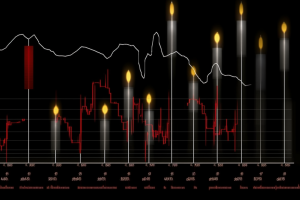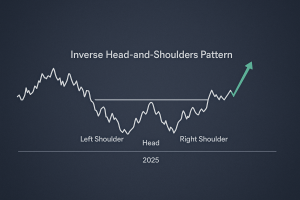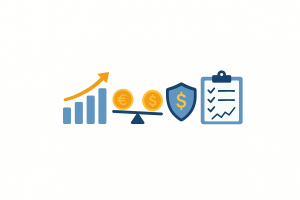Introduction
Currency pairs are the backbone of Forex trading, where traders exchange one currency for another. Understanding how currency pairs work is essential for anyone looking to navigate the foreign exchange market effectively. This article will delve into what currency pairs are, how they function, the significance of major currency pairs, and key strategies for trading them in 2024.
What Are Currency Pairs?
In Forex trading, currencies are always quoted in pairs. A currency pair shows the value of one currency in relation to another. For instance, in the pair EUR/USD, the first currency (EUR) is called the base currency, and the second currency (USD) is the quote currency.
The price of a currency pair represents how much of the quote currency is needed to buy one unit of the base currency. So, if EUR/USD is quoted at 1.20, it means 1 euro is equivalent to 1.20 US dollars. The currency pair price fluctuates based on market conditions, geopolitical events, economic data, and interest rate differentials.
Major Vs. Minor And Exotic Currency Pairs
Currency pairs are categorized into three main groups: major pairs, minor pairs, and exotic pairs.
Major Pairs
These involve the most traded currencies globally and always include the US dollar. The most common major pairs are:
EUR/USD: Euro vs. US Dollar
GBP/USD: British Pound vs. US Dollar
USD/JPY: US Dollar vs. Japanese Yen
USD/CHF: US Dollar vs. Swiss Franc
AUD/USD: Australian Dollar vs. US Dollar
USD/CAD: US Dollar vs. Canadian Dollar
NZD/USD: New Zealand Dollar vs. US Dollar
These pairs have the highest liquidity in the Forex market and tend to have lower spreads, making them ideal for most traders, including beginners.
Minor Pairs
Also known as cross-currency pairs, these involve two major currencies excluding the US dollar. Examples include:
EUR/GBP: Euro vs. British Pound
AUD/JPY: Australian Dollar vs. Japanese Yen
GBP/JPY: British Pound vs. Japanese Yen
While these pairs are less liquid than the majors, they still offer good trading opportunities, especially for traders interested in non-USD pairs.
Exotic Pairs
These involve one major currency paired with a currency from a developing or smaller economy. Examples include:
USD/TRY: US Dollar vs. Turkish Lira
EUR/ZAR: Euro vs. South African Rand
USD/SGD: US Dollar vs. Singapore Dollar
Exotic pairs tend to have higher spreads and lower liquidity. They are more volatile due to economic instability in the respective countries, making them riskier for traders.
Bid, Ask, And Spread In Currency Pairs
When trading currency pairs, you’ll encounter the bid and ask prices. The bid price is the price at which you can sell the base currency, while the ask price is the price at which you can buy it. The difference between the bid and ask price is called the spread.
For example, if EUR/USD is quoted as 1.2050/1.2053, the bid price is 1.2050 and the ask price is 1.2053. The spread, in this case, is 3 pips. The spread represents the broker’s profit and can vary depending on market conditions and the broker’s fee structure.
Factors That Affect Currency Pair Movements
Several factors can influence the price of currency pairs. Understanding these factors is crucial for making informed trading decisions.
Economic Data: Indicators such as GDP growth, unemployment rates, and inflation reports play a significant role in currency movements. For example, strong US economic data might lead to a rise in the value of the US dollar against other currencies.
Interest Rates: Central banks set interest rates to control inflation and influence economic activity. Higher interest rates often attract foreign investment, increasing demand for a currency. Conversely, lower rates can weaken a currency.
Geopolitical Events: Political instability, elections, and international conflicts can cause sudden fluctuations in currency prices. For instance, uncertainty surrounding Brexit led to significant volatility in the GBP/USD pair.
Market Sentiment: Forex markets can be driven by traders’ perceptions and attitudes toward risk. During periods of global uncertainty, safe-haven currencies like the Japanese Yen (JPY) and Swiss Franc (CHF) often rise in value.
How To Trade Currency Pairs: Key Strategies For 2024
Forex trading strategies vary depending on a trader’s goals, risk tolerance, and time commitment. Below are some effective strategies for trading currency pairs in 2024.
Scalping: Scalpers make numerous small trades throughout the day, aiming to profit from minor price movements. Scalping requires quick decision-making and access to real-time market data.
Day Trading: Day traders open and close all positions within a single trading day, avoiding overnight market risks. This strategy works well for highly liquid pairs like EUR/USD, where there are frequent price movements.
Swing Trading: Swing traders hold positions for several days to capture larger price movements. This strategy is less time-intensive and can be applied to major and minor currency pairs.
Trend Trading: Traders who follow this strategy identify and follow the direction of a currency pair’s trend. If the EUR/USD pair is in an uptrend, for example, traders might look to buy on pullbacks, hoping to capitalize on continued upward momentum.
Tools For Trading Currency Pairs
Success in Forex trading requires the use of reliable tools and platforms. In 2024, the most popular platforms for trading currency pairs are:
MetaTrader 4/5: These platforms offer advanced charting tools, automated trading, and support for a wide range of indicators.
TradingView: A powerful charting platform that provides traders with access to various tools and a global trading community.
Forex Factory Calendar: This tool helps traders stay on top of important economic events and news releases that could impact currency pairs.
Conclusion
Understanding currency pairs and how they function is fundamental to Forex trading success. Whether you’re trading major, minor, or exotic pairs, knowing the factors that influence currency prices and the best strategies to use can enhance your trading performance. As we head further into 2024, staying informed about global economic developments and using reliable trading tools will be key to navigating the Forex market successfully.



